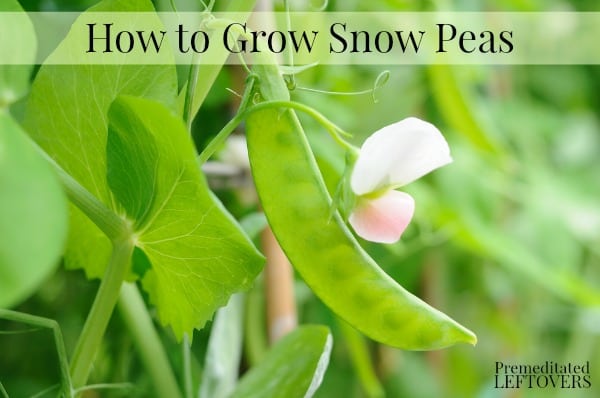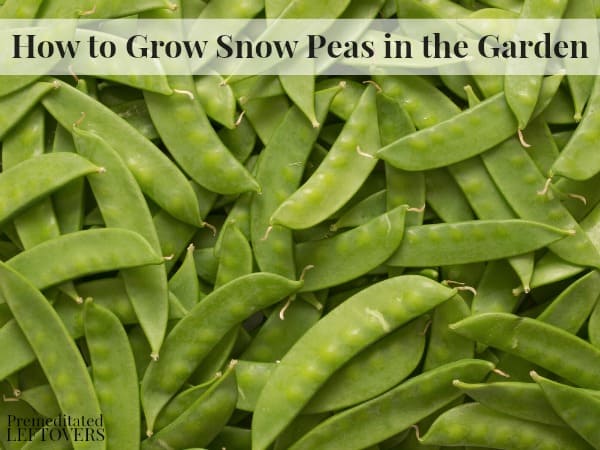These tips on how to grow snow peas will help you care for snow pea plants from seed to harvest.

If you live in a cooler climate and think you can’t successfully grow vegetables, think again. Snow peas aren’t just called snow peas to sound cute, but because they can actually survive quite chilly temperatures while producing a great harvest. Snow peas are tender and tasty, perfect for eating fresh or adding to stir fry or salad. If you have been considering growing snow peas, take a look at these helpful tips on how to grow snow peas right in your backyard! You will find that they are hardy little plants with lots to offer.
How to Grow Snow Peas
How to plant snow pea seeds:
Snow peas are a kind of seed that does better when planted directly into the garden as opposed to being started indoors or started from seedlings. They don’t take long at all to sprout. Since they grow quickly and are delicate seedlings it is advised you plant directly into the soil once temperatures reach a steady 45 F or higher each day.
When choosing a place to plant, you should know you DON’T need full sun. Snow peas will do just fine with less than 6 hours of sun per day, and can handle as little as 4 hours of sun per day. They aren’t huge fans of the heat, so keeping them cool through regular watering and mulch will help.
To plant your snow peas:
- Plan on planting them in rows that are 12 inches apart.
- Seeds should be planted about one inch deep, and 2 inches from the next seed.
- As you can see, you can fit a lot of snow pea seeds in a small space, which is nice.
- You should fertilize your snow pea seeds right after you plant them, and you can feed again 3-4 weeks later. This will give them a boost and a strong start so they can hit the ground running! In no time you will see sprouting, and little green tendrils will start to take off.
All of this said, can be snow peas be planted in containers? They can! Granted you can only plant a few seeds per large 12 inch flower pot, but they will take off. It is advised you add some type of small stick or trellis system for the peas to grow on as they sprout.
General snow pea care tips:
You will find that critters enjoy snow peas very much, so keeping them out of the garden while the seedlings mature is key. You can add proper fencing or place netting around the plants to help keep animals from munching. Sprinkling some hot pepper flakes around the plants may help as well.
Add some mulch to the base of your snow pea plants to help keep the roots warm and help support proper drainage. Mulch can also help suppress weeds which can be harmful to the soft tendrils growing on the plants.
Continue to water regularly, providing a good two inches of water per week. As plants grow, you will want to add stakes or a trellis the plants can use for support. This will help the soft tendrils as the snow pea pods start to become heavy.
The big thing to keep in mind is to not disturb the root of the plant since they tend to be shallow. Take care when adding mulch, pulling weeds, or doing any digging in your garden.
How to harvest your snow peas:
There are a few things gardeners look for to see if snow pea pods are ready for picking. Here is what to consider before picking snow peas:
- Snow peas are usually ready to pick within a month of planting.
- When ready, the shell is tender, the pod is swollen with peas, and a taste test is sweet.
- If you notice the shell is hard or crunchy, the pod is flat, and the taste is bitter, it may be too early for picking.
Once pods are ready to be picked, start picking and check back every few days for new pods. The more you pick, the more will return.
Harvested peas can be stored in a cool and dry area until you are ready to use them. You can also consider freezing them for later.
Growing your own snow peas can be quite rewarding. Consider these tips on how to grow snow peas and see what a tasty treat they can be!


Leave a Reply